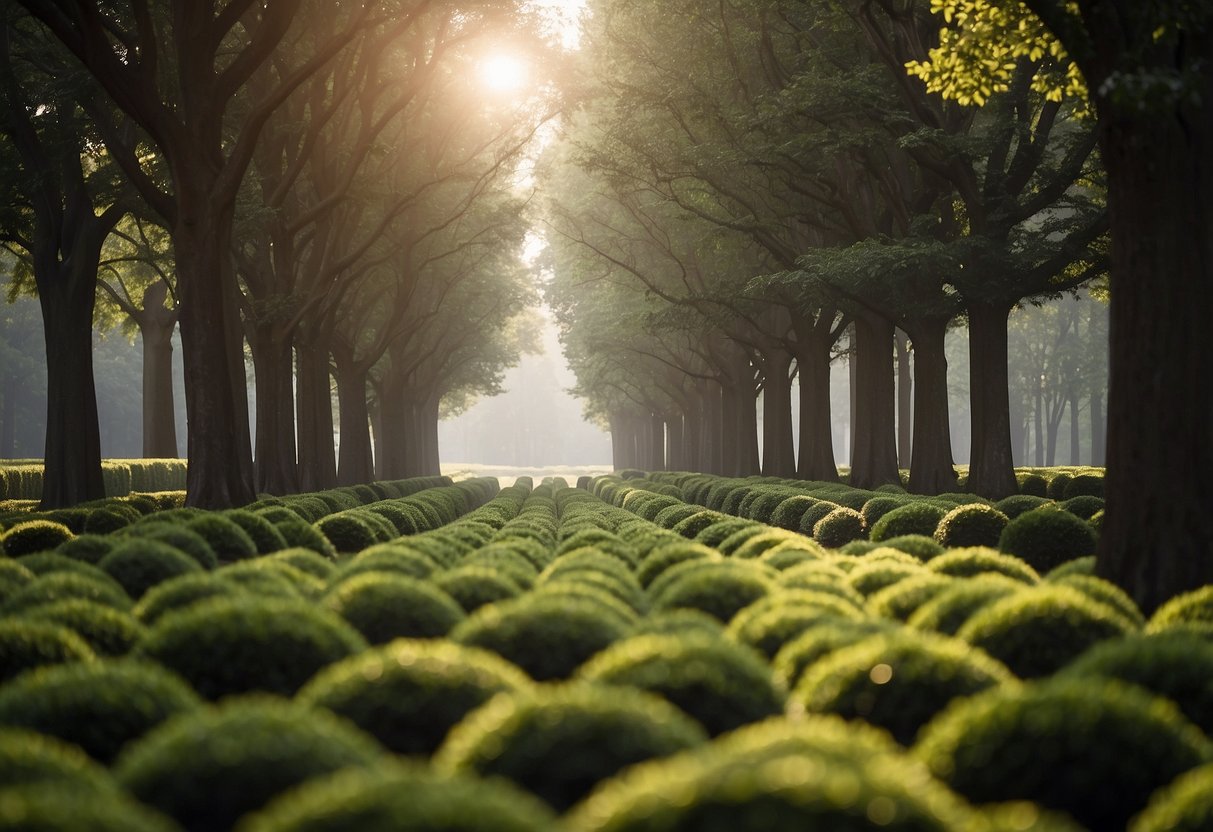Are Boxwoods Deer Resistant? A Comprehensive Guide
Boxwoods are a popular choice for gardeners looking to add an evergreen shrub to their landscape. However, one of the biggest concerns when it comes to planting any type of shrub is whether or not it will be able to withstand deer browsing. Gardeners often wonder if boxwoods are deer-resistant and if they can be used in areas where deer are a common issue.

When it comes to deer-resistant shrubs, boxwoods are often at the top of the list. While no plant is completely deer-proof, boxwoods contain alkaloids that make them unpalatable to deer. This means that they are less likely to be eaten by deer compared to other types of shrubs. However, it is important to note that young boxwoods may still be vulnerable to deer browsing until they are established.
Boxwoods are a versatile shrub that can be used for hedging, topiaries, and edging. They are hardy in zones 5-9 and can tolerate a variety of growing conditions. Whether you are looking to add some structure to your garden or create a formal hedge, boxwoods are a great choice for any landscape.
Understanding Deer-Resistant Boxwoods
Boxwoods are a popular choice for gardeners who want to add evergreen shrubs to their landscape. They are also known for their deer-resistant properties, which makes them ideal for homeowners who live in areas where deer are prevalent. In this section, we will discuss the characteristics of boxwood shrubs, how to incorporate them into your landscape, and how to maintain healthy boxwoods.
Characteristics of Boxwood Shrubs
Boxwoods are evergreen shrubs that come in a variety of textures and growth rates. They are drought-tolerant and can be planted in both full sun and shade. Boxwoods are also known for their dense foliage, which makes them an excellent choice for foundation planting, formal gardens, topiaries, and hedges.
There are many varieties of boxwood shrubs available, each with its own unique characteristics. Some popular varieties include Buxus sempervirens, Buxus microphylla, and Buxus sinica. When selecting a boxwood variety, it is important to consider the texture and growth rate of the plant to ensure it fits your landscape’s needs.
Boxwoods in the Landscape
Boxwoods are a versatile shrub that can be used in a variety of landscape designs. They are often used as foundation planting around homes or as a backdrop for other plants. Boxwoods can also be used to create formal gardens, topiaries, and hedges.
When planting boxwoods, it is important to consider the plant’s growth rate and mature size. Boxwoods can be slow-growing, which makes them ideal for small gardens or areas where space is limited. They can also be pruned to maintain a specific size and shape.
Maintaining Healthy Boxwoods
To keep your boxwoods healthy, it is important to provide them with the proper care. Boxwoods should be fertilized in the fall and early spring to promote healthy growth. They should also be pruned regularly to maintain their shape and remove any dead or diseased branches.
Boxwoods prefer well-draining soil and should be watered regularly, especially during hot and dry weather. Mulching around the base of the plant can help retain moisture and prevent weeds from growing.
In conclusion, boxwoods are a popular choice for gardeners who want to add evergreen shrubs to their landscape. They are also known for their deer-resistant properties, which makes them ideal for homeowners who live in areas where deer are prevalent. By understanding the characteristics of boxwood shrubs, how to incorporate them into your landscape, and how to maintain healthy boxwoods, you can enjoy these beautiful plants for years to come.
Complementary Deer-Resistant Plants

When planning a garden, it is essential to consider the surrounding environment and the wildlife that may frequent the area. Choosing deer-resistant plants is a wise decision to prevent damage to your garden. However, it is also essential to select complementary plants that will thrive alongside your deer-resistant shrubs and perennials.
Selecting Companion Plants
When selecting companion plants, it is essential to choose those that are also deer-resistant. Evergreens, such as juniper, are an excellent choice for year-round protection and privacy. Weigela and Pieris japonica are also excellent choices for adding color and texture to your garden.
Pollinators are also an essential consideration when selecting companion plants. Hydrangeas are a great option for attracting bees and butterflies to your garden. They are also deer-resistant and come in a variety of colors and sizes.
Creating a Deer-Resistant Garden
Creating a deer-resistant garden involves more than just selecting deer-resistant plants. It is also essential to take steps to protect your plants from pests and deter deer from entering your garden. Installing a fence or using deer repellent can be effective in keeping deer out of your garden.
It is also important to note that some plants, while deer-resistant, may be toxic to other animals. For example, boxwood is toxic to humans and most animals, making it an excellent choice for deterring deer. However, it is essential to handle boxwood with care and keep it away from pets and children.
In conclusion, selecting complementary deer-resistant plants is essential for creating a thriving garden that is also protected from deer damage. Consider the environment, pollinators, and protection from pests when selecting companion plants. With careful planning and attention, you can create a beautiful garden that is both deer-resistant and aesthetically pleasing.


